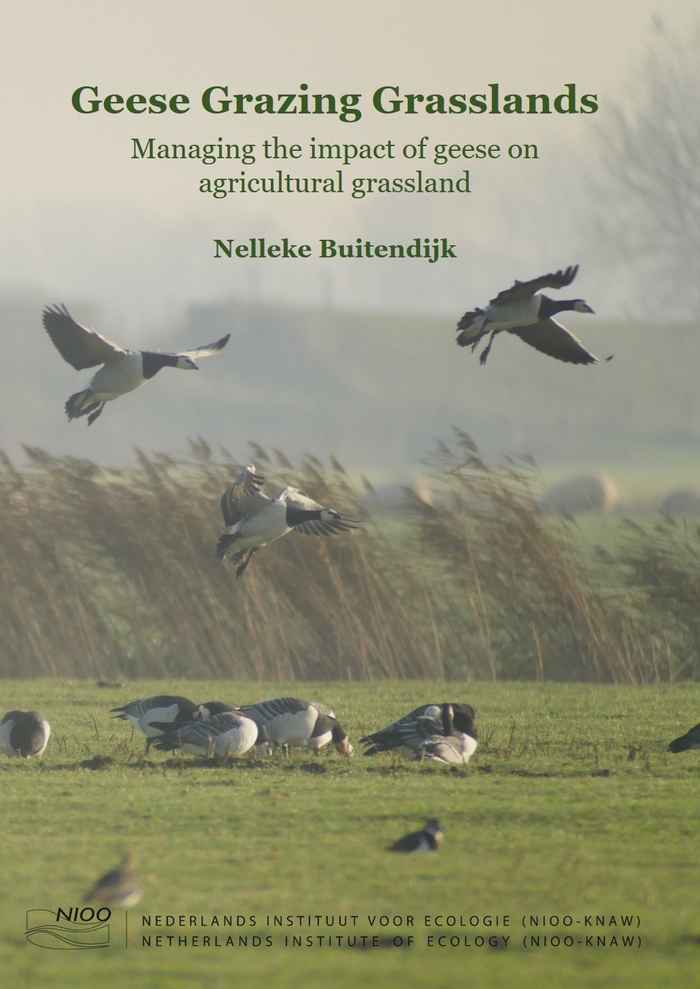PhD defence ceremony by Nelleke Buitendijk
- Date
- 2 June 2023
- Time
- 11:00
- Location
- Aula - Lutherse kerk

Geese Grazing Grasslands – Managing the impact of geese on agricultural grassland
In recent years, many goose populations have increased substantially, potentially negatively affecting their natural environment and leading to conflict with farmers. To reduce farmer-goose conflict different management approaches are possible: compensation payments, scaring geese from certain areas to concentrate them in accommodation areas, or, when legally allowed, active population reduction. However, to effectively and ethically implement such practices, we need to understand how goose grazing affects agricultural yields and how management can influence this. This thesis looks at the effect of the timing and intensity of grazing on agricultural grassland through literature research, analysis of GPS-data and existing data on goose numbers and agricultural damages, and an experimental exclosure study. Furthermore, a simulation study is described, evaluating the potential cost-effectiveness of management through scaring and accommodation. We find that the effect of grazing on yield increases with grazing pressure, but at a decreasing rate. Temporal factors of grazing also play an important role in the effect of grazing on grassland yields. Grazing can change the growth rate of grass, delaying the start of the growing season and allowing yield losses to increase even after grazing ends. The effect of grazing differs between species, which has consequences for goose management. Scaring activities may have negative effects on goose survival and could result in higher economic costs associated with goose grazing. To be effective, the timing within the season and the required scaring intensity need to be carefully considered. Furthermore, adequate alternative habitat, suitable for multiple species, should be available.
